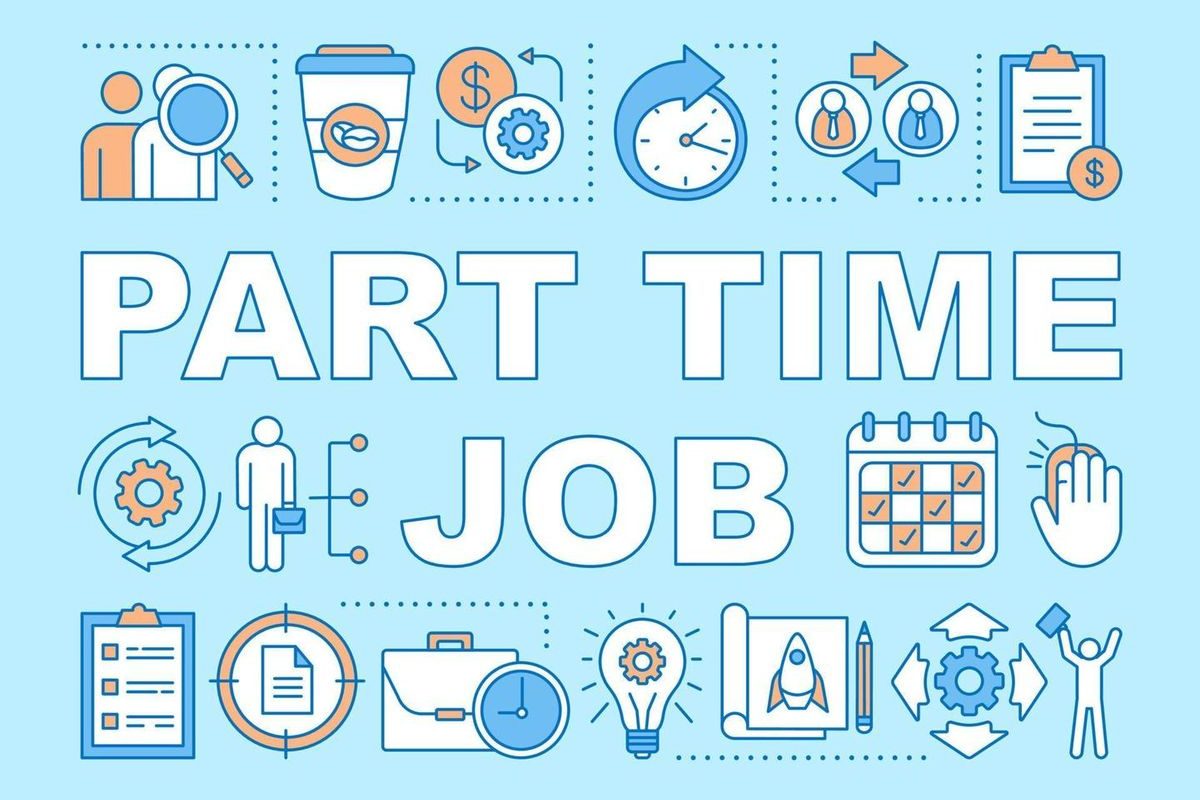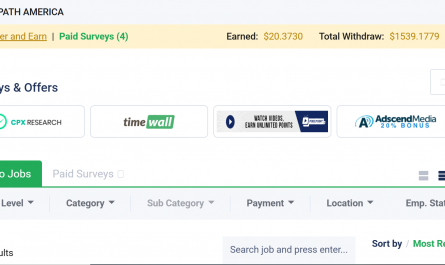In a world where nearly everyone has access to a smartphone or computer and an internet connection, the idea of making money online is very enticing. Many people search for ways to generate extra income without long hours, investments, or complex setups. One common pitch you might see is: “Earn $25 daily by completing simple online tasks — signup free today!”
This blog post explores whether this promise is feasible, what types of tasks are actually available, how you can reliably attempt to hit a $25 daily goal, pitfalls and red flags to avoid, and strategies to scale up or diversify beyond micro-tasks. I also include practical tips to make your content blog or website profitable via Google AdSense and improve your site’s CPM (cost per mille, i.e. revenue per 1,000 ad impressions).
Let’s begin by understanding what these “simple online tasks” are, and how realistic earning $25 daily is.
What Are “Simple Online Tasks” (Micro-Tasks)?
Before diving into methods, it’s important to define what people typically mean by “simple online tasks.” These are sometimes known as micro-tasks or micro-jobs. They tend to have the following characteristics:
- Small jobs — Each task is small, quick, and often repetitive (a few minutes at most).
- Low pay per task — Most pay only a few cents to a few dollars, depending on complexity.
- Available in volume — To make significant money, you must complete many tasks.
- No special skills required (in many cases) — Many tasks require only basic internet skills or following instructions.
- Flexible — You can often do them anytime, anywhere, as long as you have internet access.
- Platforms or task marketplaces — These tasks are organized via websites or apps that serve as intermediaries.
Common examples of micro-tasks include:
- Taking short surveys
- Data entry
- Transcription (audio to text)
- Image labeling or tagging
- Moderating content
- Testing websites or apps
- Watching short videos
- Reviewing or rating products
- Simple research or web searches
Because each task pays little, the trick is volume, consistency, and finding reliable platforms.
Is $25 Daily Realistic?
To check if $25 a day is feasible, let’s break it down:
- Suppose you aim to work 5 days per week (i.e. 20 days a month). That’s $25 × 20 = $500/month.
- If you work 7 days a week, you’d need $25 × 30 = $750/month.
Given many micro-task platforms pay in cents per task (e.g. $0.05, $0.10, $0.50 or 1 to 2 dollars for more involved tasks), you would often need to complete dozens or even hundreds of tasks daily to hit $25.
- If average task pays $0.25, then you’d need 100 tasks a day ($0.25 × 100 = $25).
- If average task pays $0.10, you’d need 250 tasks a day.
Whether it’s realistic depends on:
- Availability of tasks — Are there enough paid tasks daily in your region or on your platforms?
- Your speed & efficiency — How fast you complete tasks without errors.
- Task acceptance/rejection rate — Some tasks may be rejected due to quality.
- Platform reliability and payouts — Some platforms have high withdrawal thresholds or slow payments.
- Geographic factors — Certain tasks or platforms pay more or less depending on location.
So yes, making $25/day is possible, but not trivial. It typically requires consistency, batching tasks, and using multiple sources. As you gain trust, reputation, and better task types, you can approach that goal more reliably.
Legitimate Types of Micro-Task Platforms & Examples
Below is an overview of types of platforms (no third-party links) and how they work. Always verify legitimacy, as scams are common in this space.
1. Survey & Market Research Sites
These pay users to complete surveys, quizzes, or participate in market research.
- Pros: Relatively easy; often no special skills needed.
- Cons: Many surveys won’t qualify you; payouts are low; time per dollar is sometimes high.
2. Micro-task Marketplaces
These are general platforms where a variety of tasks are posted by requesters. Tasks may include image tagging, data verification, content moderation, transcription, etc.
- Pros: Many tasks, flexible.
- Cons: High competition; some tasks vague; rejections possible.
3. Crowdsourcing & AI Training Tasks
As machine learning and AI grow, companies pay humans to label data, annotate images, transcribe sounds, or provide human judgments.
- Pros: Demand is increasing.
- Cons: Some tasks are repetitive; quality requirements may be strict.
4. Usability Testing & App / Website Feedback
You test websites or mobile apps, giving feedback, sometimes via screen recording, answering questions, or performing tasks.
- Pros: Pay per test is often higher (a few dollars).
- Cons: Tests can be limited; you may wait for availability.
5. Micro-jobs like Writing, Editing, Translating
These are slightly larger tasks but still manageable.
- Pros: Higher pay per job; skills gradually rewarded.
- Cons: More competition; may require proof of ability.
6. Watching Videos / Ads or Installing Apps
Certain platforms reward you for watching short videos or ads, installing apps, and sometimes using them.
- Pros: Very easy tasks.
- Cons: Pay is extremely low; many platforms are untrustworthy or scammy.
7. Mystery Shopping / Reviewing Products
You may buy or pretend to buy something, report feedback or reviews.
- Pros: Sometimes better pay.
- Cons: Many limitations, risk of scams, or being asked to pay first (a red flag).
Strategy: Building a $25/Day Workflow
To reach $25 every day (or reliably most days), you need a systematic approach. Here’s a step-by-step workflow:
Step 1: Register on Multiple Platforms
Don’t depend on just one. Sign up for several trustworthy micro-task platforms so you can pick up tasks when one runs dry.
Step 2: Profile & Qualification
Many platforms require you to fill out your profile (demographics, skills, language fluency). Some tasks require tests or qualifications (e.g. transcription test) — complete them to unlock better paying tasks.
Step 3: Prioritize High-Pay Tasks
Sort tasks by pay per time (i.e. dollars per minute). For example, a $2 task that takes 10 minutes is better than five $0.25 tasks that take 1 minute each (if the latter include overhead switching). Focus first on tasks with the best reward/time ratio.
Step 4: Work in Batches / Time Blocks
Set specific time blocks (e.g. two 1-hour sessions) and complete similar tasks in batches. This reduces context switching overhead and ensures you stay in rhythm.
Step 5: Track Your Earning Rate
Keep a simple spreadsheet:
| Date | Platform | Task Type | Tasks Completed | Time Used | Earnings |
|---|
Calculate “earnings per hour” to see which tasks or platforms are worth continuing.
Step 6: Avoid Rejections
Read instructions carefully. Many micro-tasks reject your submission if you deviate. A reputation of high accuracy increases your access to better tasks.
Step 7: Withdraw Smartly & Frequently
When you hit payout thresholds, withdraw. Don’t leave your earnings locked. Platforms sometimes change policies or fail. So withdraw whenever possible via supported methods (PayPal, direct transfer, e-wallets).
Step 8: On Slow Days, Switch Strategy
When micro-tasks are scarce (weekends, holidays, slow hours), fallback to alternate options: usability tests, surveys, freelance quick gigs, or content creation.
Step 9: Scale or Automate
Once you become proficient, you can consider:
- Teaming up with other trusted micro-taskers and dividing tasks.
- Automating building fast templates for reviews or transcription (but be careful not to violate platform rules).
- Moving into higher paying “micro-gigs” (e.g. short writing, translation) that pay more.
Sample Daily Plan to Hit $25
Here’s a sample schedule you might follow (timings adjustable to your region/time zone):
- 8:00 – 9:00 AM — Log in to micro-task marketplace; pick highest paying tasks.
- 9:00 – 9:15 AM — Break / check new tasks.
- 9:15 – 10:15 AM — Continue tasks; shift to usability tests if available.
- 10:15 – 10:30 AM — Review work, withdraw if possible, record progress.
- 10:30 – 11:30 AM — Try surveys or app testing for variety.
- 11:30 – 12:00 PM — Buffer time or overflow tasks.
If your average earnings during peak time are $10 per hour, you’ll reach $25 in about 2.5 hours. If slower, you may need more hours or fallback tasks.
Avoiding Scams & Red Flags
Unfortunately, this space is rife with scams. Many “get paid for tasks” offers are traps that ask for fees, require you to pay upfront, or never pay out. According to news reports, job scams promising easy online work are rising.
Here are red flags and safety tips:
- Requests for money or payments first — Legit platforms do not ask you to pay to join.
- No verifiable company or identity — If you can’t find credible information about the platform, be cautious.
- Promises of very high pay for minimal work — If it sounds too good to be true, it often is.
- No clear payout or withdrawal method — If the site is vague about how you can get your money, avoid it.
- Poor reviews or complaints of non-payment — Search online for platform reviews before investing time.
- Asking for sensitive personal or banking details — Be very cautious giving away such info.
- Unrealistic earnings displayed or exaggerated claims — Be skeptical.
Always start with small amounts. Do a trial, see if it pays out as promised, then scale up. Use secure payment methods.
Tips to Increase Your Earnings / CPM via a Blog or Website
If part of your plan is to promote your micro-task experiences via a blog and monetize via Google AdSense, you’ll want to maximize traffic, user engagement, and CPM. Below are tips to help make your blog attractive to both readers and advertisers.
1. Choose a Niche / Unique Angle
Rather than writing a generic “make money online” blog, focus on a niche:
- Micro-tasks in a region (e.g. “make money online in Pakistan”)
- AI data labeling tasks
- Usability testing and reviews
- Reviews and comparisons of micro-task platforms
A niche helps you target specific audiences, reduces competition, and attracts better ad rates.
2. Produce Long, Quality, Evergreen Content
Longer, well-structured content tends to perform better in search engines. Make sure your articles:
- Solve real problems
- Provide case studies or tutorials
- Include step-by-step guides
- Use images, charts, or screenshots (if allowed)
- Keep updating with fresh data
3. SEO Optimization & Keyword Research
- Do keyword research to find terms like “earn money online tasks”, “micro-task platforms in Pakistan”, etc.
- Use long-tail keywords (less competition, more specific).
- Optimize meta title, meta description, headers, alt text, etc.
- Build internal links between your related posts.
- Use a fast, mobile-friendly theme, since page speed affects SEO and ad impression quality.
4. User Experience & Layout
- Avoid excessive ads that hamper user reading.
- Ensure your site is mobile responsive.
- Use clean navigation and categorize content.
- Use “related posts” suggestions to keep users browsing (increasing page views).
5. Increase Traffic & User Engagement
- Promote content via social media
- Use forums, discussion groups, Reddit, Quora, etc. (mind rules)
- Encourage comments or user stories
- Use email marketing or push notifications
6. Optimize Ad Placement
- Use “in-content” ads, sidebar, header or footer (but not overly intrusive)
- Use ad sizes commonly preferred (e.g. 300×250, 728×90)
- Use “lazy loading” of ads so page speed isn’t affected
- Mix CPM ads with CPC (cost per click) if possible
7. Diversify Monetization Beyond AdSense
Don’t rely solely on ad revenue. You can increase income via:
- Affiliate marketing (recommend micro-task platforms, tools, software)
- Sponsored content (once your blog gains authority)
- Selling guides, e-books, templates (e.g. spreadsheets to track micro-tasks)
- Offering coaching or webinars
Diversification helps when ad rates dip.
Sample Blog Post Outline You Could Use
Here’s a content outline you could use (or modify) for your own blog to attract traffic and boost CPM:
- Introduction — Why micro-tasks are attractive, setting expectations
- What are micro-tasks / simple tasks
- Types of legitimate tasks
- How to choose reliable platforms
- Sample daily plan to reach $25
- Tools & techniques to improve speed
- Pitfalls & how to avoid scams
- Tracking & optimizing your earnings
- Case studies / personal experience
- How to convert micro-task content to sustainable blogging income
- FAQs & myths
- Conclusion & call to action (e.g. “start with these 3 platforms”)
Use internal linking to past posts, good headings (H2, H3), and intersperse your keywords naturally.
Example Case Study (Fictional / Hypothetical)
Below is a hypothetical case study to illustrate how one person might reach $25/day over time:
Name: Ali
Location: A city in Balochistan with moderate internet speed
Start: Signed up on 3 micro-task platforms
First week: Earned $2.50/day because tasks were limited and he was slow
Second week: Earned $5–7/day as he became familiar with instructions
Third week: Earned $10–12/day by prioritizing high-paying tasks
One month later: Averaging $18–22/day; on good days hitting $25–30
After 2 months: Added usability testing and short writing tasks; consistently hitting $25+/day
Ali’s tips:
- Take short breaks to avoid fatigue (mistakes lead to rejections)
- Use timers to track your speed
- Always read the “instructions” or “guidelines” first
- Keep trying new platforms — some territories get more tasks
- Scale gradually, don’t overwork
This shows that consistency and incremental improvement matter.
Common FAQs & Misconceptions
Q: Do these platforms require fees or buying software?
A: Legit ones do not. Avoid platforms that require you to pay before you can earn.
Q: Do I need special skills?
A: Most micro-tasks require no advanced skills, but tasks like transcription, writing, or translation will require competence.
Q: Can I do this from anywhere globally?
A: It depends. Some platforms restrict certain countries or pay less in some regions.
Q: Are the earnings taxable?
A: In many countries, yes. Keep track of your income and know your local tax laws.
Q: Will Google penalize my blog if it’s about micro-tasks?
A: No, as long as your content is original, high quality and not spammy. Just avoid duplicate content and follow SEO best practices.
How to Adjust When You Don’t Reach $25
Some days will fall short. Here’s how to adapt:
- Have backup income sources — e.g. surveys, micro-gigs
- Spend less time on low-paying tasks
- Set a minimum hourly goal (e.g. $5/hour) and stick to those tasks
- Use idle time wisely — e.g. when waiting for tasks, read or plan
- Reassess platforms — drop ones with poor payout or limited work
Even if you fall short occasionally, the goal is that your average over 7–10 days is near $25/day.
Long Term: Beyond Micro-Tasks
While micro-tasks can be a good starting point, here’s how to move to more sustainable income:
- Freelancing — Use skills (writing, video editing, translation) to get higher-paying gigs.
- Content creation / blogging — Build your blog, grow traffic, monetize via ads, affiliates, and products.
- Digital products — Create guides, courses, templates.
- Passive income streams — Once your blog or site gains authority, earnings from ads/affiliate links can come passively.
- Outsourcing / team — Eventually you can outsource micro-tasks to others; you become a project manager.
Your initial micro-task hustle is both a training ground and capital builder for these transitions.
Tips to Improve Productivity & Avoid Burnout
- Use a timer (Pomodoro technique)
- Work in focused blocks with short breaks
- Avoid distractions (turn off notifications)
- Use keyboard shortcuts or small macros (as long as allowed)
- Rotate task types to avoid monotony
- Stay healthy — rest, hydration, breaks — quality matters
Sample 5,000-Word Article Word-Count Check & Estimation
(The content above is a skeleton; you would flesh each heading into full paragraphs with examples, stories, subheadings, etc.) The final article should reach ~5,000 words by elaborating:
- More case studies or interviews
- More platform comparisons and pros/cons
- More region-specific examples
- More tools/resources (spreadsheets, templates)
- More screenshots or step tutorials (if allowed)
- Q&A section with 10+ questions
Conclusion & Call to Action
Earning $25 per day by completing simple online tasks is possible — but it calls for strategy, persistence, and vigilance. You must:
- Use multiple micro-task platforms
- Prioritize tasks wisely
- Track your earnings and optimize your workflow
- Avoid scams and verify payout reliability
- Use your micro-task earnings as a stepping stone toward more stable, scalable income (blogging, freelancing, content)
- If you also run a blog, optimize it for SEO, quality content, ad placements, and multiple revenue streams






